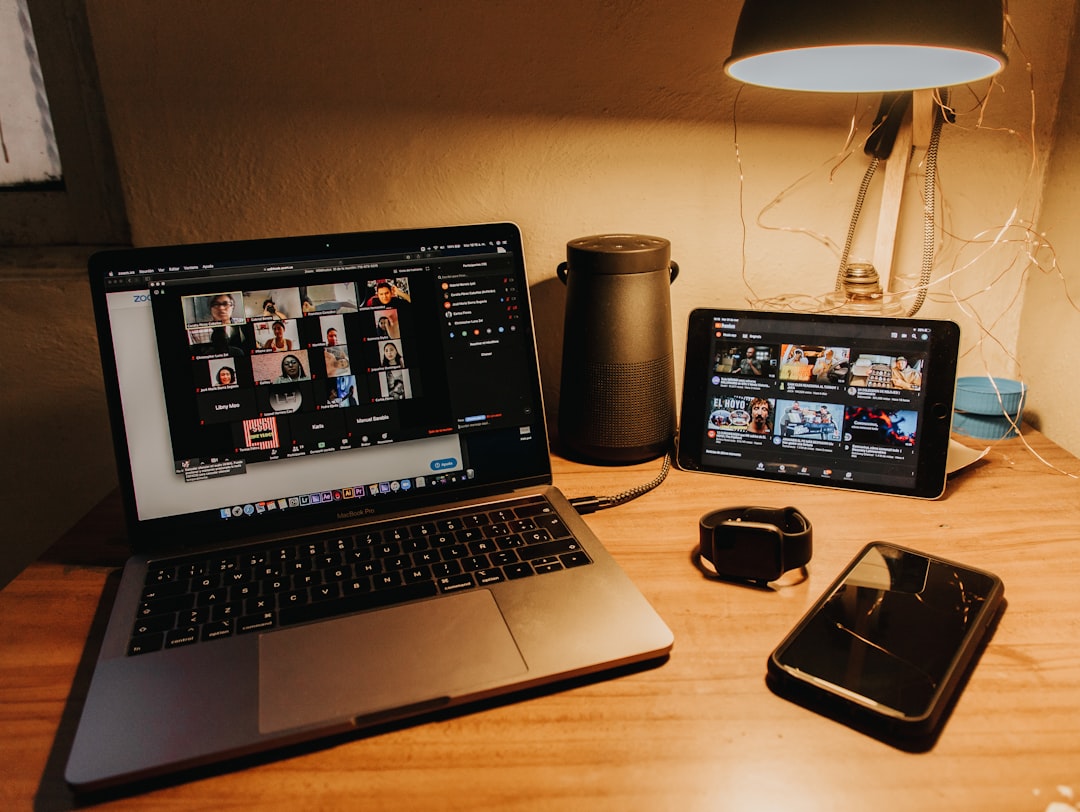Taking meeting notes leads to better comprehension, says Association for Psychological Science.
For a company to attain success all its available resources should be aligned to function seamlessly for maximum effect. Meetings are a necessary part of an organization’s goal of attaining this success.
However, there’s a problem with that:
We often forget the discussion soon after leaving the meeting room.
Forgetting the key ideas, action points, and highlights of a meeting makes the conversation useless. It disrupts the whole concept of the meeting; instead of making everyone more productive, it leads to unproductivity.
So, how do you remember everything that’s discussed in the meeting?
By taking notes in a meeting.
Notes capture essential information and improve soft skills like organization, active listening, and innovation.
However, the primary concern is: How to take notes in different types of meetings while still focusing on the discussion?
The answer lies in science.
The Science of Taking Notes: The Forgetting Curve
The forgetting curve hypothesis shows how our memory declines over time. The curve represents the amount of information that we lose over time due to a lack of active recall. As per this theory, humans tend to lose about half of the memory of newly learned knowledge within a couple of days.
But, there is a way to learn and retain better; active recall. When you actively recall information, the repetitions increase the interval until the next recall is needed. Simply, each active recall session improves memory.
The most efficient way to perform active recall is by taking notes. Hour-long meetings decline focus, which makes it harder to remember the crucial points. If you take meeting notes, you’re recording the information to revise whenever needed. Thus, notes will help you actively recall all the past information within minutes.

Does Taking Meeting Notes Make Sense Practically?
When two or more people brainstorm to find a solution, many insights occur. These little ideas and insights might seem trivial but serve a big plan. But, these often get lost in the conversation. That’s why taking meeting notes is so vital.
Taking notes makes a meeting effective because it leads to:
- Better retention: The forgetting curve shows that frequent recalls lead to better retention. If you have detailed meeting minutes or notes, you can have a quick recap of the discussion. This, in turn, improves your long-term memory.
- Improved Collaboration: Meeting notes help those who could not attend the meeting to be brought up to speed. Instead of elaborating on everything, you can share the key points of the meeting.
- Give Direction: Written information demands attention. Problems and solutions become tangible when you record them in meeting notes. When you’ve documented the tasks and due date, it becomes easier to assign the responsibilities.
- Builds Accountability: Taking notes in a meeting removes any tardiness in the employees. Writing down the tasks makes the team more accountable. When workers have figured out their duties, they become more aware of the job.

Taking Meeting Notes vs. Taking Meeting Minutes
Meeting notes and meeting minutes are sometimes used interchangeably. To better communicate your goals, take effective meeting minutes or notes. Fundamentally, both record the critical points in a meeting. But there are some key differences.
Meeting notes mean short-hand information about the deadlines, goals, tasks, ideas, etc. These can be modified as per the purpose and intention.
In contrast, meeting minutes are more formal. As the names suggest, minutes (My-noot) captures subtle information like:
- An attendees list.
- An absentees list.
- Key topics covered in the meeting.
- Start and adjourn time of the meeting.
- Decisions taken in the meeting.
Meeting minutes have a structured layout. They serve as the legal documentation of the meeting, which the courts and auditors can view.
Now, let’s move to the core process of taking meeting notes to improve productivity.
How to Take Notes in a Meeting?
The step-by-step procedure on how to take meeting notes for better comprehension:
Meeting notes serve as a customizable resource that everyone can use. They have all the vital points, as discussed in a meeting. You need to follow a defined structure to take notes; otherwise, your notepad would be a mess.
Here’s are the key points you need to implement to take better meeting notes:
1. Understand the Basics
There are some main topics that should be recorded in the notes:
- Facts: Facts define the nature of the meeting.
- Date and time and attendees: Is it a team meeting, interview, peer-review, etc.? Who is leading the discussion? For instance, “Today’s team meeting with Matt, who is the creative lead of this project.”
- Agenda: Prepare for the meeting even before the meeting starts by creating a plan. Then write the key points of the agenda and the desired outcomes before taking notes. Limit each point to one or two lines.
- Action Items: Whenever an action plan is discussed in the meeting, jot it down. Describe the assignment, responsibilities, assign and due date.
- Ideas: You may have some insights or ideas that you want to share during a meeting. Create some space to jot down your thoughts and comments.
- QnA: This type of information records the doubts and confusion that the attendees may have.
2. Record Keywords and Action Items Only
This one is counter-intuitive; don’t try to capture every word in the meeting. Writing down everything that’s been mentioned is an old-school strategy.
Here’s why this approach may fail you:
- It consumes a lot of time and defeats the purpose of writing meeting notes.
- It doesn’t bring clarity on what exactly happened in the meeting. Writing down things using spoken words contains redundant information and filler words.
A better approach to taking meeting notes is grabbing the keywords or action items and supplementing them with your own words. You can look at the main pointers (facts, issues, etc.) to keep notes succinct for guide rails.
3. Use Different Note-Taking Strategies
Recall the forgetting curve, which tells us how quickly we forget new information. The solution to that is to devise techniques to aid review.
One way is to take meeting minutes or notes and write down information as it occurs. The smarter way is to use scientific methods of note-taking:
The Cornell Note-Taking Method
Walter Pauk, a professor at Cornell University, created this system to make notes more useful. A page is divided into two unequal parts (left side being smaller and right side bigger.)
The core concept is to write details on the right and critical takeaways (‘cues’) on the left. Then, at the bottom of the page, write down the topic’s summary in two three sentences. Cornell Note Taking System is effective because it makes the notes scannable.
Thus, making the active recall of meeting notes faster and easier.

The Cornell system also proposes the five R’s technique to boost your retention. These five R’s includes:
- Record: Draft key facts, data, and topics.
- Reduce: summarize the information using specific keywords and add questions.
- Recite: Rewrite things in your own words.
- Reflect: Think about: what will you do with this information?
- Review: revise the notes periodically for long-term retention.
When to use: Cornell Note Taking System works best when you need to share the meeting notes with your teammates, managers, etc.

Quadrants Method
This system is quite simple, efficient, and Bill Gates’ favorite. To apply this system, grab a paper and divide it into four quadrants:
- Questions: Write down queries and doubts you have in the meeting. Get them answered before the session ends.
- Notes: Random things that cross your mind during a meeting, e.g., idea, insight, curiosity.
- To-dos: Action items such as deliverables, tasks, deadlines, and milestones you’re responsible for.
- Assigned: The tasks or jobs you assign to your delegate or contractor.
When to use the Quadrants system?
Use if you are capturing information for your use and to maintain your workflow.
Mind Maps
If linear thinking isn't compatible with you, mind maps are the way to go. In fact, non-linear note-takers retain 20% more than linear ones.
A mind map is a graphical representation that visually organizes information. It allows users to grasp several ideas at a glance.
Here’s how to make a mind map:
- Grab a paper and write down the main concept, idea, or insight at the center.
- For instance, you can write a B2B sales strategy at the center and use arrows or branches to list the subcategories.
- Further, divide those branches into sub-branches and make the topic more detailed.
When to use Mind Maps?
Mind maps are the perfect note-taking method during a brainstorming session. Whenever you’re meeting to discuss new ideas, use mind maps to connect them with problems and solutions.
4. Write to Get Directions
Step back and ask yourself: Why do you want to learn how to take meeting notes?
- Is it to capture information to share?
- Or to use these notes to progress further?
The main aim of taking meeting minutes and notes is to get an idea of the future actions. In other words, to find if you have achieved the desired outcome of the meeting?
Ensure you write down action plans and decisions before summing up the notes. Your meeting notes should direct you to the desired path of work. A perfectly captured meeting will remove all the hindrances and doubts that are slacking your progress.
5. Record your Meetings
A report by Ovum makes things scary:
- 8 meetings per week across all employee types and company sizes.
- 10 meetings per week for all employees above junior level.
- 12 meetings per week for executive management and higher.
- 17 meetings per week for VP, director, and c-level roles in highly collaborative industries.
To put things into perspective, most employees attend 62 meetings per month.
Now, let’s do some quick math here.
The above report by Ovum suggests that most meetings are between 16mins to 30 mins. So, if you attend 62 meetings per month of this duration, you’re spending a minimum of 17 hours in meetings alone!
With so many hours spent in meetings per week, recording everything is tedious. It starts taking a toll on your memory when you’ve to remember and recall everything.
One answer to how to take better meeting notes is using a meeting recorder. Or, use a recording device to record the session.
Recording your meetings will give you more time to ask questions and get into in-depth conversations. But remember to set aside some minutes to revisit the recorded session to write the main takeaways in your own words.
When to Record Meetings?
If you have trouble keeping up with many meetings, you can record meetings. Ensure that you ask for permission from other members. Generally, it’s practical to record meetings where you’re the active speaker—for instance, interviews, client calls, sales calls, one-on-one meetings, etc.
But what if you can automatically record, take notes, or share your meeting notes within minutes?
With Fireflies.ai, you can be worry-free about taking notes in every single meeting. Fireflies.ai captures and transcribes your entire conference and allows others to collaborate on digitized notes. After the session gets over, Fireflies sends you detailed notes within minutes.
What’s more, you can search for an hour-long conversation within five minutes using keywords like a deadline, task, date, and much more. That’s why you should transcribe your business meetings.
All you need is to integrate your calendar with Fireflies.ai, and our AI will auto-join your meetings that mention the meeting URL. Or, manually invite fred@fireflies.ai to your web conference, and Fireflies will join as a guest to record and transcribe your meetings.
PRO TIP: Install Fireflies Chrome extension and transcribe your entire meeting in a single click.
Make Your Meetings Count
Taking meeting notes isn’t restricted to sales reps, C-executives, or delegates. It’s an effective strategy to boost overall productivity and collaboration. Using specific structures can further improve the efficiency of your workflow. The bottom line is to step back and reflect on optimizing repetitive tasks using automation.
Read Next:

Featured Image Illustration by Freepik Storyset.







